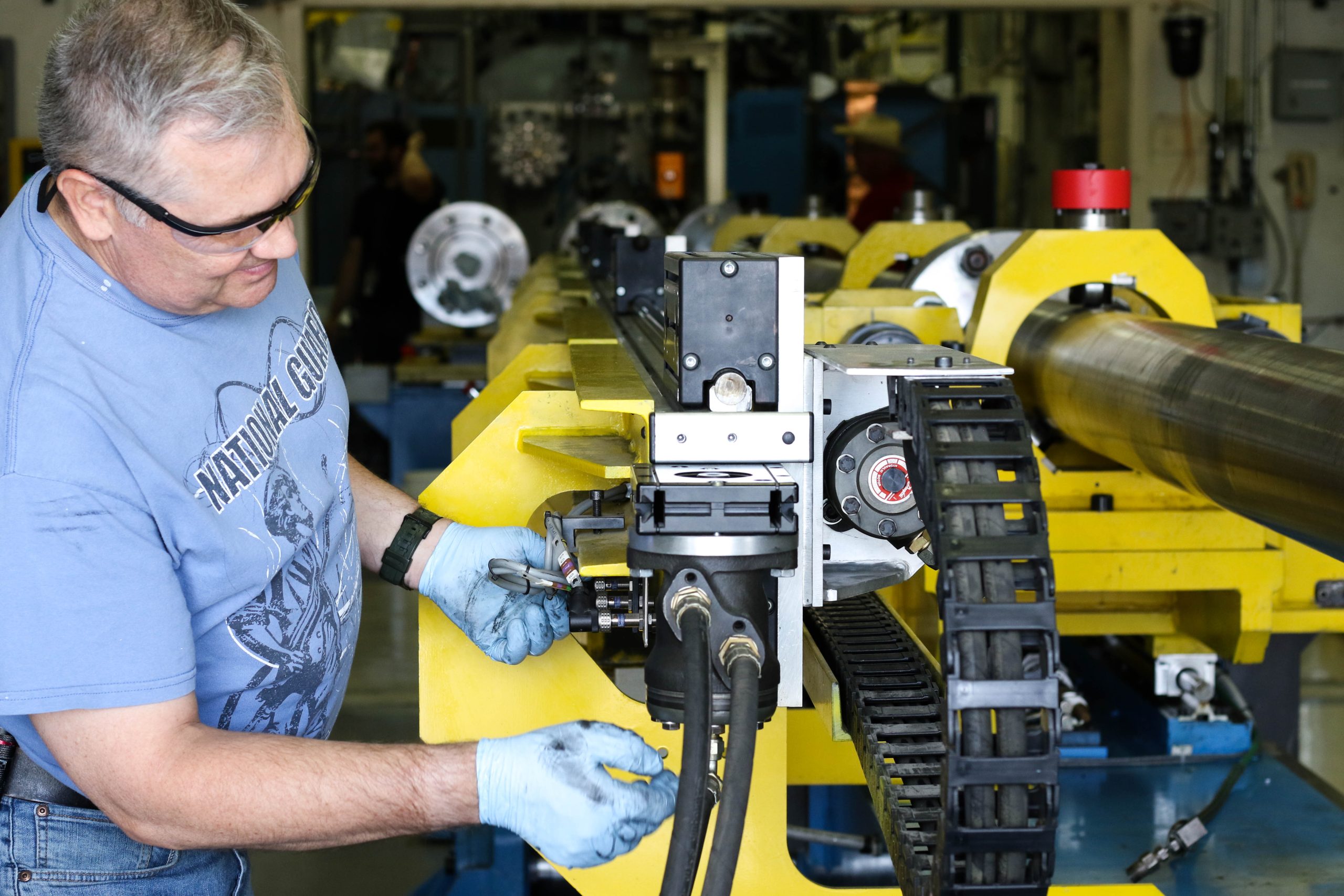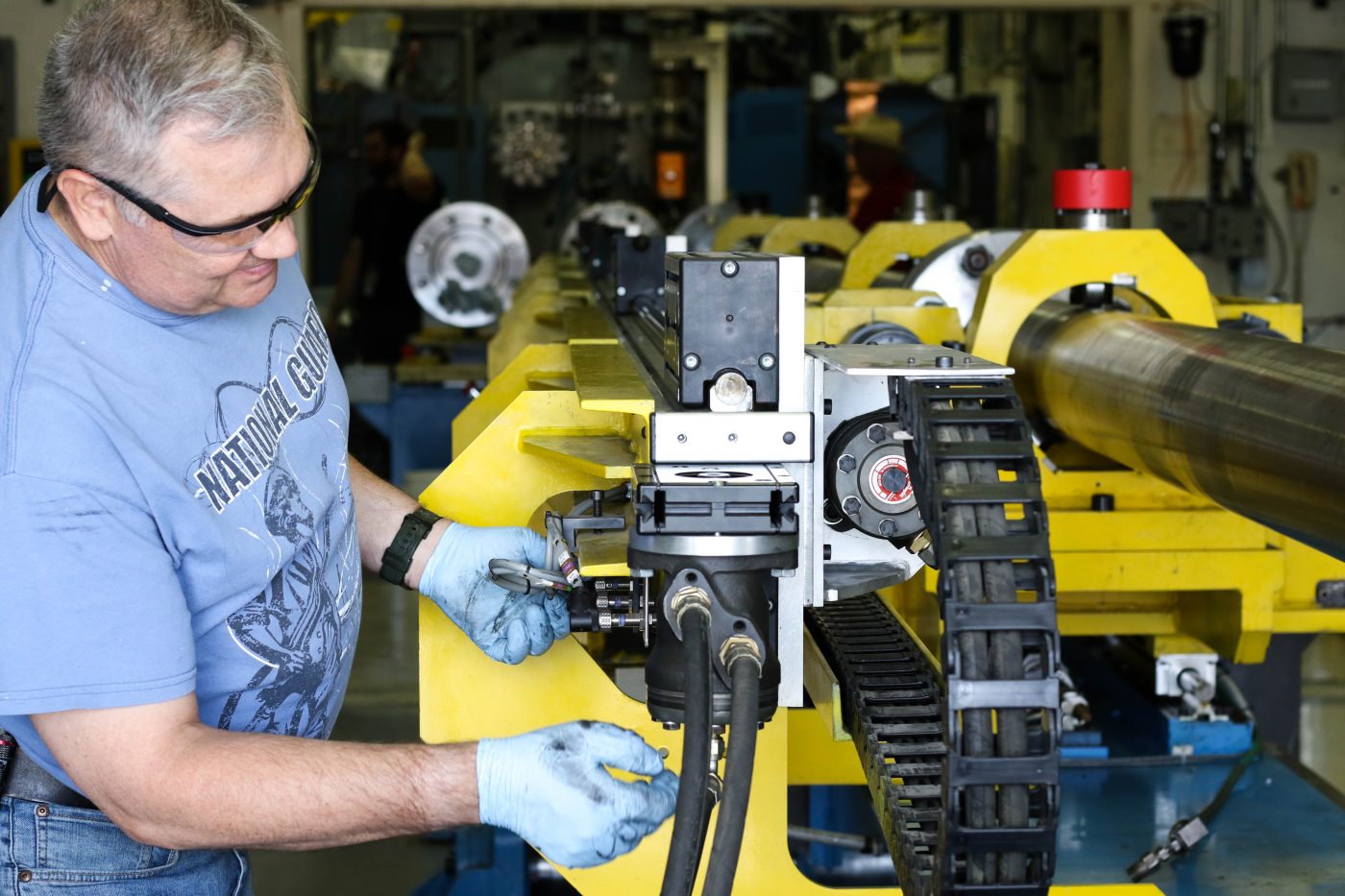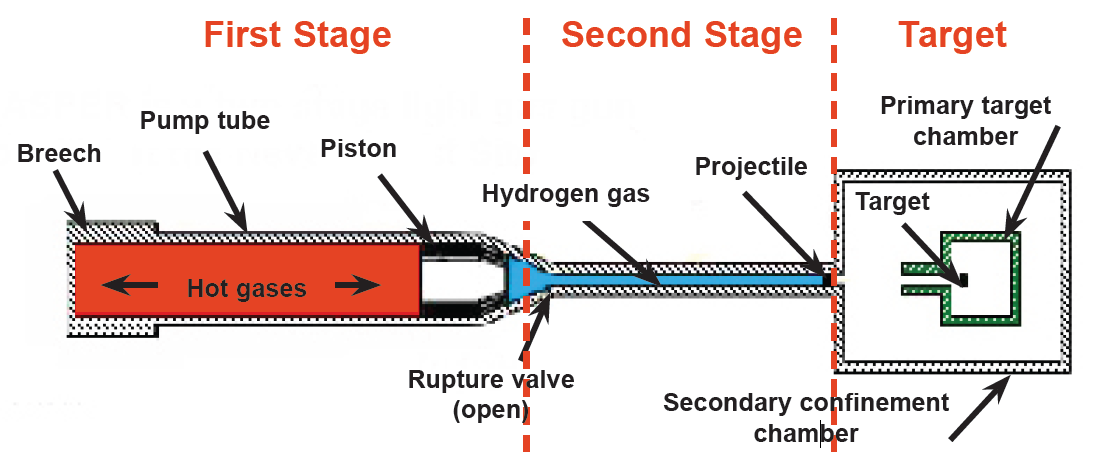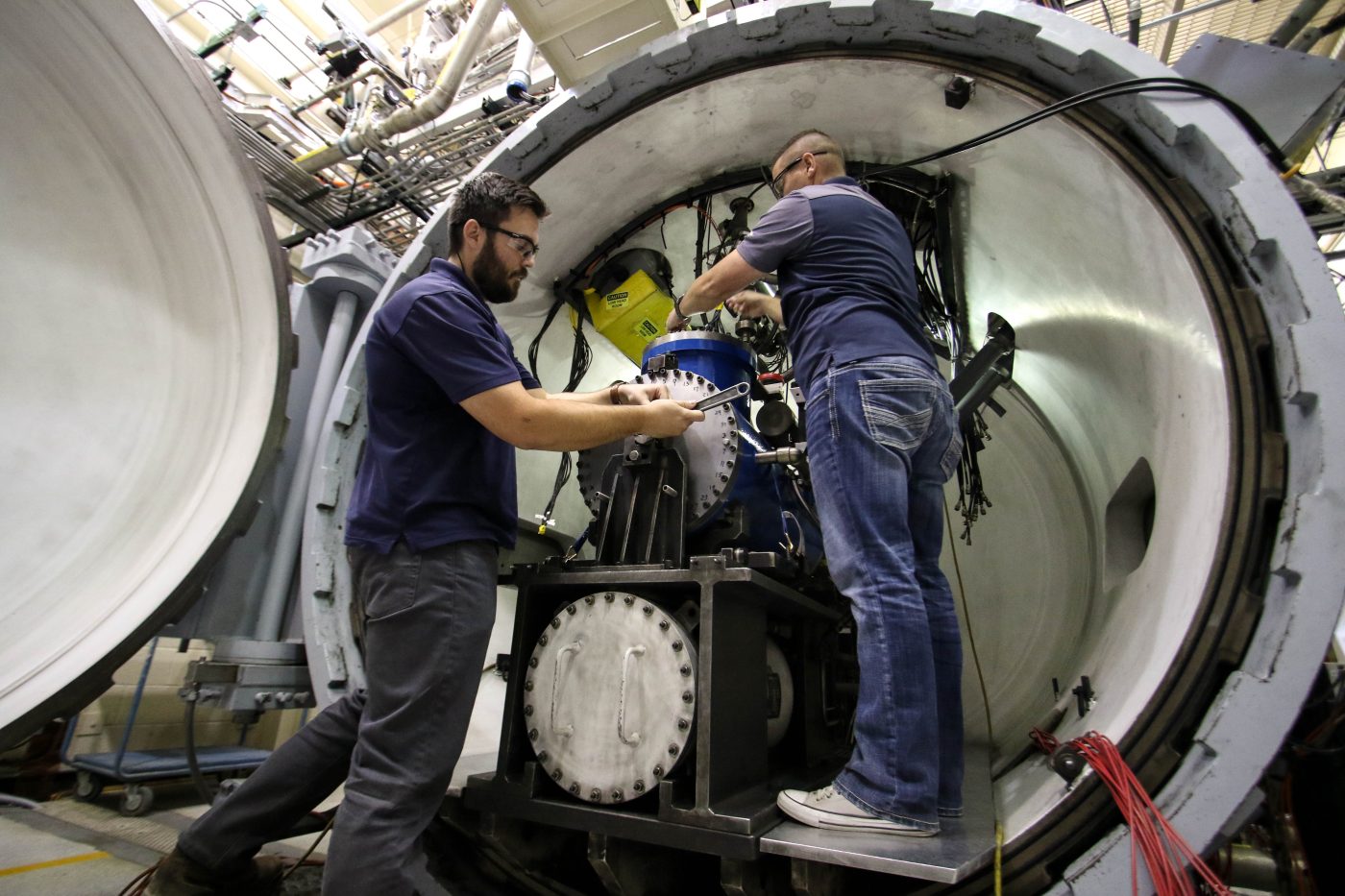
Joint Actinide Shock Physics Experimental Research (JASPER) Facility

Joint Actinide Shock Physics Experimental Research (JASPER) Facility
The U.S. Department of Energy ensures the safety, security and reliability of the nuclear weapons stockpile through a combination of actinide or special nuclear material experiments, highly accurate physics modeling and modern computational power.
An array of experiments and activities are conducted at the Joint Actinide Shock Physics Experimental Research (JASPER) Facility located at the NNSS. JASPER plays an integral role in the certification of the nation’s nuclear weapons stockpile by providing a method to generate and measure data pertaining to the properties of materials at high shock pressures, temperatures and strain rates.
Science at Work
Scientists and physicists use the JASPER two-stage gas gun to explore plutonium performance while safely restricting nuclear material to a confined area. The JASPER experimental methodology, well-engineered apparatus and advanced diagnostics provide scientists with more precise data than can be obtained from conventional, high-explosive experiments.
The gas gun consists of a first-stage breech containing gunpowder and a pump tube filled with a light gas such as hydrogen, helium or nitrogen and a second-stage evacuated barrel for guiding the high-velocity projectile to its target. Hot gases from the burning propellant drive a heavy piston down the pump tube, compressing the gas. At extreme pressures, the gas breaks a rupture disk and enters the narrow barrel, propelling the projectile housed in the barrel toward its target at velocities of up to eight kilometers per second.

When the projectile hits the target, it induces a high-pressure shock wave in the target material. In a fraction of a microsecond, the shock wave reverberates through that material. Diagnostic equipment triggered by the initial shock measures the dynamic properties of the shocked material inside the target assembly.
The target is subsequently disintegrated by the impact of the projectile and contained within the primary confinement chamber. A second confinement chamber protects workers as an added safety precaution in the unlikely event that the primary confinement system fails.

In addition to shocks, other methods are used to exert pressure more gradually on material samples to study different pathways to high-pressure behavior. The gas gun also uses non-nuclear materials with similar properties as targets to validate new target designs, gun parameters and diagnostic configurations while also collecting baseline data to be analyzed against experiment results.
Indispensable Data for National Security
JASPER is a multiorganizational research facility hosting scientists from Lawrence Livermore National Laboratory (LLNL), Los Alamos National Laboratory, Sandia National Laboratories, and other government agencies. LLNL maintains management responsibility for the experimental program. NNSS conducts the experiment and data capture, and manages facility operations, engineering, diagnostic development and deployment, and health and safety.
Data from the experiments are used to determine how special nuclear material performs and responds to a predetermined set of physical conditions – including extreme heat and pressure – in order to validate computer models and predict how the material would act in real-world weapons applications. Experimental results are used to refine the current nuclear weapons codes, which enables better predictive capability and ensures confidence in the U.S. nuclear stockpile.
